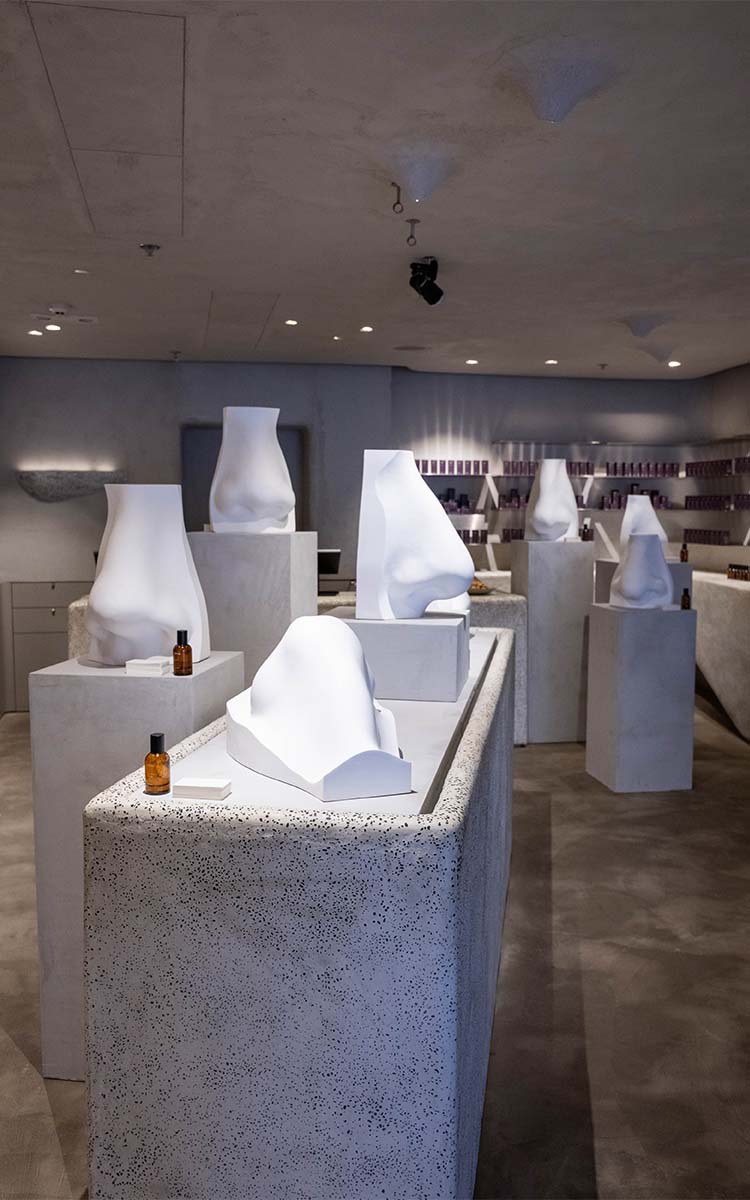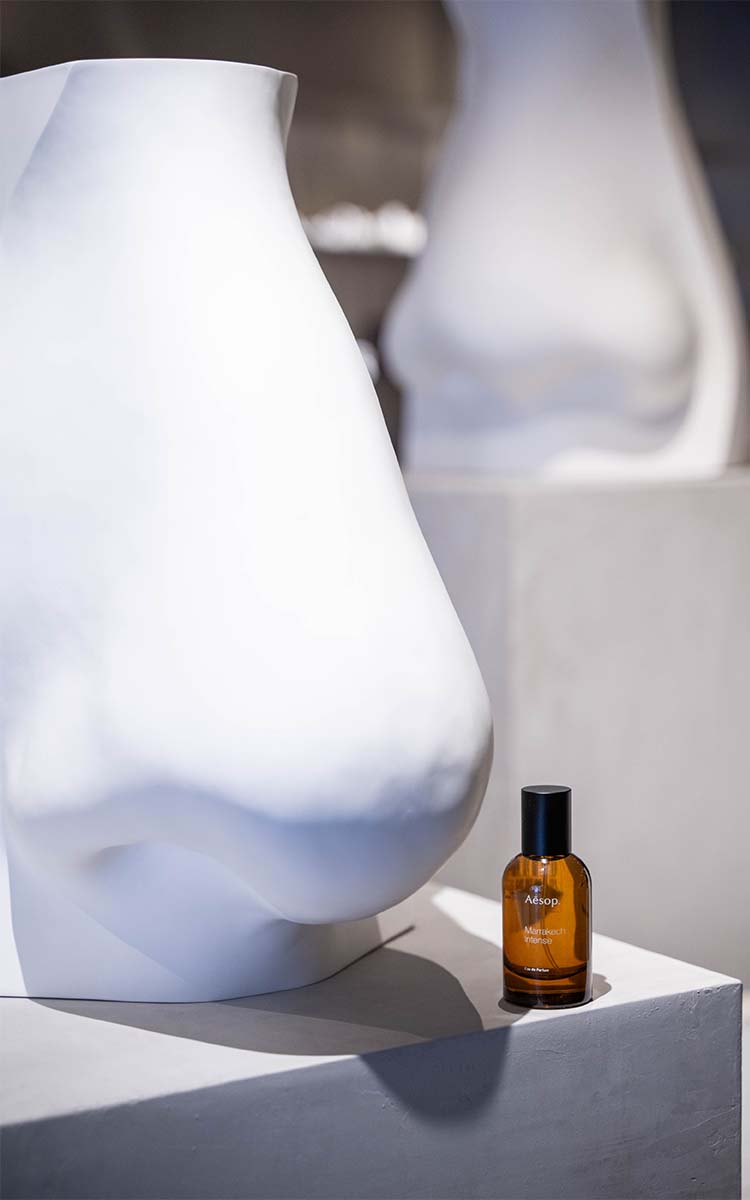searching...
see all result
No entries
- About Us
- Tourist Information
- Services & Facilities
- Member Privileges
- Gift Card
- Shop Online
The creation of fragrance is an exercise both lyrical and rooted in science—one that begins with multifaceted inspirations, proceeds with exacting attention to the ingredients that might give them expression, and culminates in complex, nuanced formulations. Aesop’s personal fragrances sit in consummate harmony with the brand’s skin, hair and body care products, which contain essential oils found in the seeds, bark, stems, roots and flowers of plants. These oils offer benefits to the skin, hair and scalp, conferring the effective and purposeful care that Aesop prioritises: their delectable aromas are but an incidental pleasure. Aesop’s fragrances were first developed to complement these products, following frequent conversations with customers about their enjoyment of the aromatic qualities of the brand’s formulations. Since then, the Eaux de Parfum range has evolved into a rich repertoire of aromas, noted for their nuance and nonconformity.
Aesop seeks to experiment with aroma, eschewing typical archetypes and assumptions about demographic preferences, working with prominent French perfumers Barnabé Fillion and Céline Barel. The greatly rewarding process of collaborating with such talented noses has led to the creation of fragrances that are as distinctive, subtle and sophisticated as the ideas that brought them into being. They know no gender boundaries, and are intended for all who take pleasure in the evocative power of scent.


Marrakech Intense, an evolution of Aesop’s earliest fragrance, resulted from an inaugural collaboration with Barnabé Fillion, drawing on the aromas of spices used in Moroccan dishes, the intense colours of the Ochre City’s souks and surrounding desert, and the warm hospitality of its denizens. Tacit, developed in partnership with Céline Barel, takes its cues from the fresh notes of traditional colognes, and the culture, topography and fragile vegetation of the Mediterranean coast. Aesop worked again with Fillion to formulate Hwyl and Rōzu. The former alludes to Japan’s ancient Hinoki forests and lush temple moss gardens, evoking a sense of refuge in nature, via warm and woody notes and an earthy sensuality. Rōzu was inspired by the life, work and enthusiasms of the Modernist designer Charlotte Perriand, and the garden rose that was created in her name.


Most recently, Aesop has partnered with Fillion to develop a distinct collection of unorthodox fragrances: Othertopias. Titled Miraceti, Karst, Erémia, Eidesis, Gloam and Ouranon, these Eaux de Parfum draw inspiration from environments which unsettle the borders between real and imagined, here and elsewhere.
These personal scents are complemented by a range of home fragrances created to lift the atmosphere and mood of any enclosed space, comprising a trio each of Aromatique Candles, Room Sprays, and Incense, as well as a botanical-based toilet deodoriser—not to mention a distinctive Bronze Incense Holder created in collaboration with Vogel Studio and a Brass Oil Burner designed in partnership with Studio Henry Wilson.
In select stores across the globe, Aesop’s Eaux de Parfum are now housed in an intriguing Fragrance Armoire, whose streamlined exterior conceals a complex inner world of transportive aromas—some familiar, some intriguing. Bottles are arranged with unfussy rigour on neat rows of shelves. The inside of the right-hand door reveals a lacquered cabinet housing twelve small drawers, each containing a porous object suffused with an Aesop fragrance, giving inquisitive noses a first sense of each scent. Many of the Fragrance Armoires also contain a unique Infusion Chamber—a glass case where customers can hang their coat or scarf. Here, their chosen fragrance is spritzed into the air and the glass doors are shut for a few seconds. Once the aroma has thoroughly infused the fabric, the customer can leave with a uniformly scented piece of clothing, carrying an olfactory trace of the sensory experience away with them. At Aesop Regent Street in London, Aesop Dongping Road in Shanghai and Aesop Sydney, the Fragrance Armoire itself is housed in a dedicated room known as the Sensorium, which plays host to a series of unique olfactory experiences. This enveloping environment embodies Aesop’s approach to fragrance—committed to provoking the senses, unsettling expectations, and evoking worlds beyond the one we inhabit.